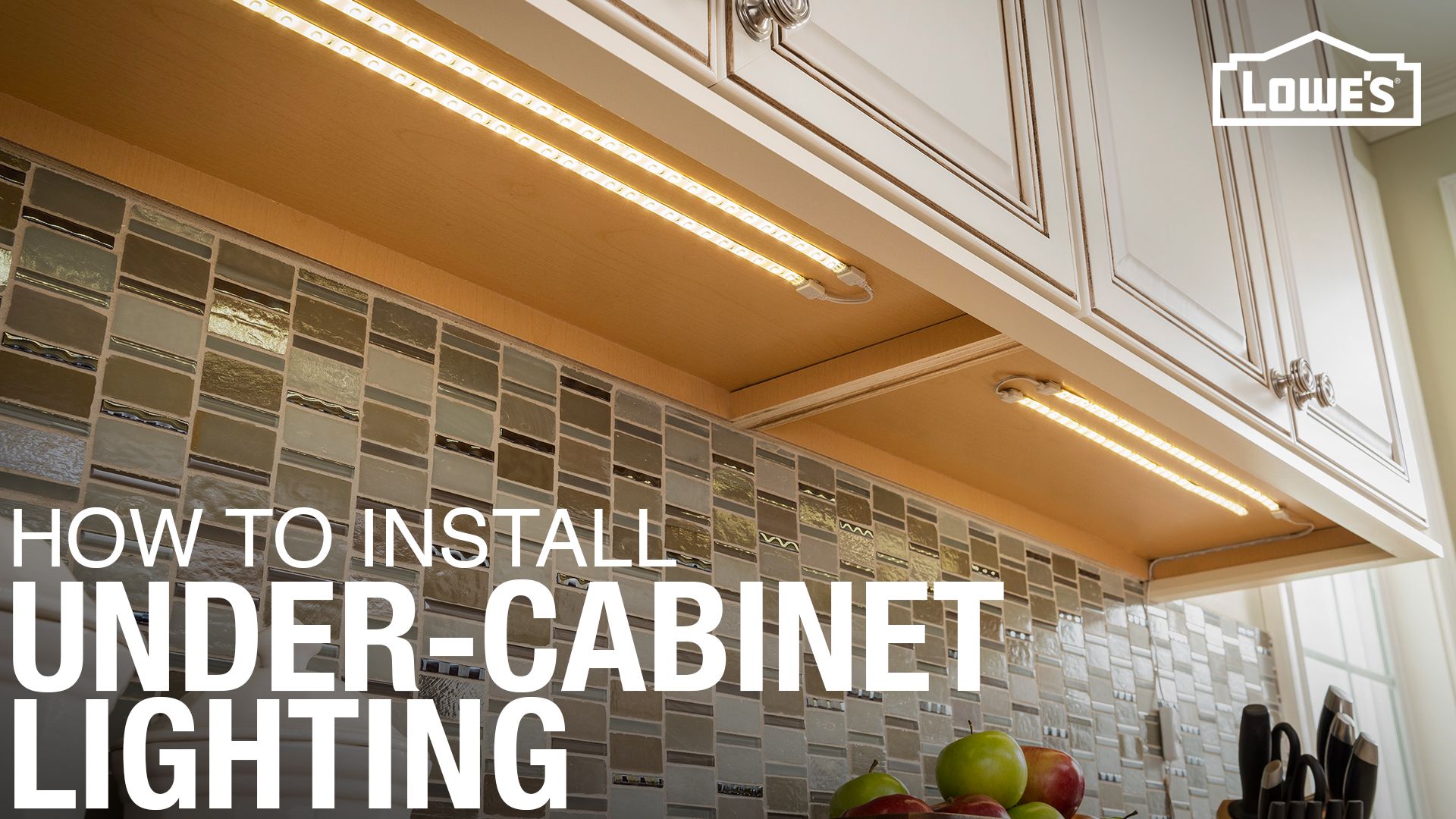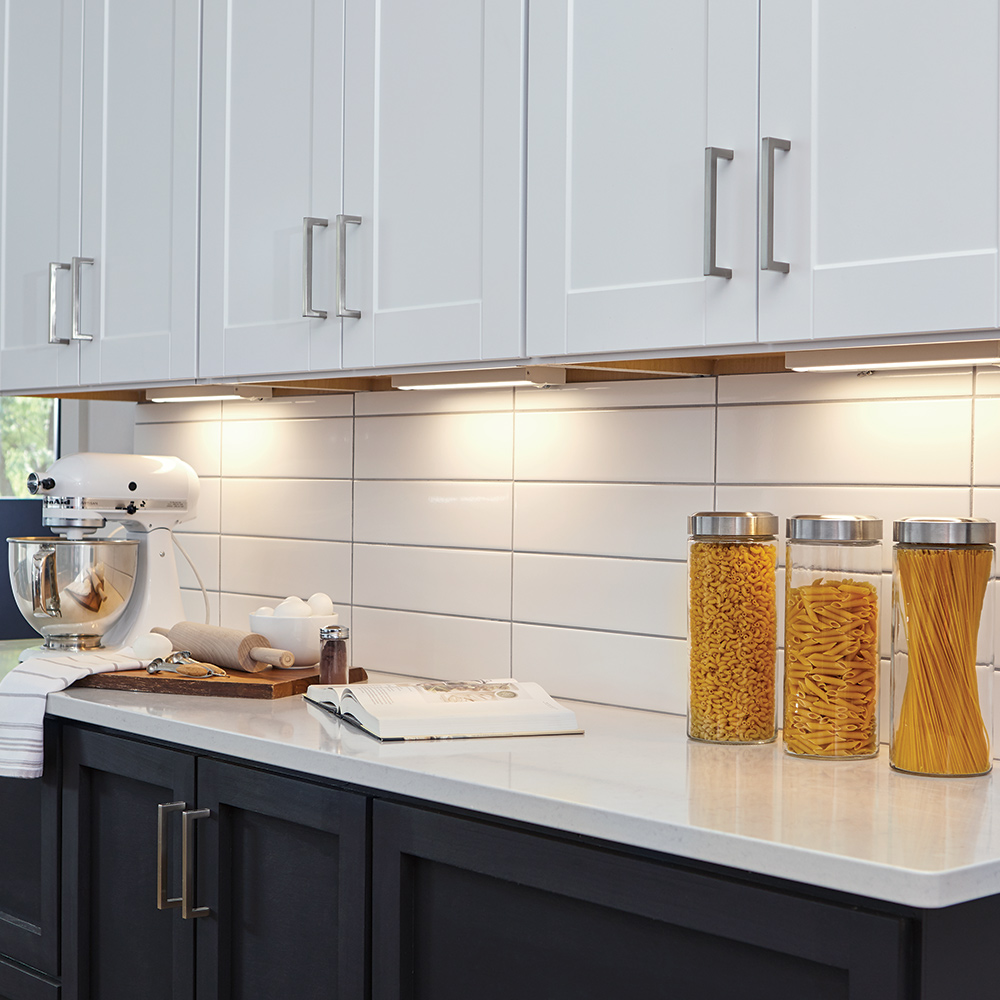Understanding Fluorescent Under Cabinet Lighting

Fluorescent under cabinet lighting has been a popular choice for kitchens and other spaces for years, and for good reason. It offers a bright, even light that can make a huge difference in the functionality and ambiance of your space.
Types of Fluorescent Bulbs
Fluorescent bulbs come in various shapes and sizes, each with its own set of advantages and disadvantages. Here’s a breakdown of the most common types:
- Linear Fluorescent Bulbs: These are the classic long, thin bulbs you’ve probably seen in office buildings. They’re affordable and efficient but can be bulky and not as aesthetically pleasing as other options.
- Compact Fluorescent Bulbs (CFLs): These bulbs are a more compact version of linear fluorescents, making them ideal for under cabinet lighting. They offer good energy efficiency and a longer lifespan than incandescent bulbs.
- T8 Fluorescent Bulbs: These are a popular choice for under cabinet lighting due to their smaller size and higher efficiency compared to traditional linear bulbs.
Comparison with LED Alternatives
LED under cabinet lighting has become increasingly popular in recent years, and for good reason. They offer several advantages over fluorescent bulbs, including:
| Feature | Fluorescent | LED |
|---|---|---|
| Energy Efficiency | More efficient than incandescent bulbs, but less efficient than LEDs. | Significantly more energy efficient than fluorescent bulbs, resulting in lower energy bills. |
| Lifespan | Lasts longer than incandescent bulbs, but shorter than LEDs. | Lasts significantly longer than fluorescent bulbs, often lasting 25,000 hours or more. |
| Cost | Generally less expensive upfront than LEDs. | More expensive upfront than fluorescent bulbs, but the long lifespan and energy savings can offset the initial cost over time. |
Example: A homeowner replaces their fluorescent under cabinet lighting with LED fixtures. They save $10 per month on their energy bill, and the LEDs last twice as long as the fluorescent bulbs. This means they save money on both energy and replacement costs in the long run.
Direct Wiring Considerations: Fluorescent Under Cabinet Lighting Direct Wire

Direct wiring fluorescent under cabinet lighting offers a more permanent and potentially more efficient solution compared to plug-in options. However, it requires a bit more technical expertise and involves working with electricity, which should be approached with caution.
Direct Wiring Process
Direct wiring fluorescent under cabinet lighting involves connecting the fixture directly to the electrical wiring in your home. This typically involves running new wiring from an existing electrical outlet or junction box to the fixture location. Before you start, make sure you have the proper tools and materials:
- Electrical tape: For securing wire connections.
- Wire strippers: For removing insulation from wire ends.
- Wire cutters: For cutting wires to the correct length.
- Voltage tester: To ensure power is off before working on electrical wiring.
- Screwdriver: For securing electrical connections.
- Fluorescent fixture: Choose a fixture that is compatible with your existing electrical system.
- Electrical wire: The appropriate gauge and type of wire for your application.
- Junction box: For connecting multiple wires.
- Safety glasses: To protect your eyes from debris.
- Work gloves: To protect your hands from electrical shocks and sharp edges.
Fluorescent under cabinet lighting direct wire – Remember, direct wiring involves working with electricity, so it’s crucial to follow safety precautions:
- Always turn off power to the circuit before working on any electrical wiring. Use a voltage tester to confirm the power is off.
- Be careful not to touch live wires. Wear insulated gloves and safety glasses.
- Never work on electrical wiring if you are unsure of what you are doing. Consult a qualified electrician.
Advantages and Disadvantages of Direct Wiring
Direct wiring fluorescent under cabinet lighting offers several advantages, but it also comes with some drawbacks:
Advantages
- Increased efficiency: Direct wiring can reduce energy loss, leading to lower electricity bills.
- Clean look: No visible cords or plugs.
- More permanent installation: Less likely to be accidentally unplugged.
- Higher power output: Direct wiring can handle higher wattage fixtures.
Disadvantages
- More complex installation: Requires more technical knowledge and experience.
- Potentially more expensive: May involve hiring an electrician.
- More difficult to modify: Changing the fixture location may require rewiring.
Step-by-Step Guide for Direct Wiring Fluorescent Under Cabinet Lighting
Here’s a step-by-step guide for installing fluorescent under cabinet lighting with direct wiring:
- Turn off power to the circuit. Use a voltage tester to confirm the power is off.
- Locate the existing electrical outlet or junction box. This will be the source of power for your fixture.
- Run new wiring from the outlet or junction box to the fixture location. Use appropriate gauge and type of wire for your application.
- Connect the wiring to the fixture. Follow the manufacturer’s instructions carefully.
- Secure the fixture to the cabinet. Make sure the fixture is securely mounted.
- Turn on the power and test the fixture. Ensure the fixture is working correctly.
Wiring Diagrams
Here’s a basic wiring diagram for direct wiring a fluorescent under cabinet fixture:
[Image: A simple diagram illustrating the connection of the electrical wires from the junction box to the fixture. The diagram shows the black wire connected to the black wire on the fixture, the white wire connected to the white wire on the fixture, and the ground wire connected to the green wire on the fixture. The diagram also shows the power switch in the circuit.]
Troubleshooting Tips
If your fixture is not working correctly, here are some troubleshooting tips:
- Check the power supply. Make sure the circuit breaker is not tripped and that the power is on.
- Inspect the wiring. Make sure all connections are secure and that the wires are not damaged.
- Test the fixture. If the fixture is not working, it may be faulty. Replace the fixture if necessary.
Installation and Design

Now that you’ve got the basics of fluorescent under cabinet lighting down, let’s talk about actually getting those lights up and running. Installing under cabinet lighting can be as simple as sticking a few lights to your cabinets or as involved as running wires through walls. Let’s break down the different installation techniques and design considerations.
Installation Techniques
There are a few different ways to install under cabinet fluorescent lighting, each with its own pros and cons. Here’s a rundown of the most common methods:
- Surface Mounting: This is the simplest and most common method. The fixtures are simply attached to the underside of the cabinet using screws or adhesive strips. It’s a quick and easy installation, and it’s perfect for DIYers. Surface mounting is also very versatile, as you can easily adjust the placement of the fixtures. However, surface mounting can be a bit less aesthetically pleasing than recessed mounting, and the fixtures can be a bit more prone to damage.
- Recessed Mounting: This method involves cutting holes in the cabinets and installing the fixtures inside the cabinet. This creates a more polished look and can help to protect the fixtures from damage. However, recessed mounting requires a bit more skill and effort, and it’s not always possible, depending on the design of your cabinets.
- Track Lighting: Track lighting is a more sophisticated option that allows you to easily adjust the direction and focus of the light. Track lighting is great for showcasing specific areas, such as a countertop or a display shelf. However, track lighting can be more expensive than other options, and it requires more planning and installation.
Installation Method Comparison
Let’s break down the pros and cons of each method in a handy table:
| Method | Pros | Cons | Suitability |
|---|---|---|---|
| Surface Mounting | Easy installation, versatile, affordable | Less aesthetically pleasing, fixtures can be more prone to damage | Perfect for DIYers, great for most applications |
| Recessed Mounting | More polished look, protects fixtures from damage | Requires more skill and effort, not always possible | Ideal for kitchens with a sleek design, great for countertops |
| Track Lighting | Versatile, allows for easy adjustment of light direction | More expensive, requires more planning and installation | Best for showcasing specific areas, great for kitchens with a modern design |
Design Considerations, Fluorescent under cabinet lighting direct wire
Now that you’ve got the installation figured out, let’s talk about designing your under cabinet lighting to create the perfect ambiance. Here are some important design considerations:
- Light Color Temperature: The color temperature of your light bulbs will affect the overall mood of your kitchen. Warm white bulbs (2700K-3000K) create a cozy and inviting atmosphere, while cool white bulbs (4000K-4500K) provide a brighter and more energetic feel. You can even get daylight bulbs (5000K-6500K) for a very bright and crisp light. Consider the mood you want to create in your kitchen when choosing your light bulbs.
- Light Distribution: The way your light is distributed will affect how well it illuminates your workspace. You’ll want to choose fixtures that provide even and glare-free lighting. Fixtures with a wide beam angle are best for illuminating a large area, while fixtures with a narrow beam angle are better for highlighting specific areas. Also, consider the height of your cabinets. For lower cabinets, you might want to use fixtures with a downward-facing beam angle, while for taller cabinets, you might want to use fixtures with a wider beam angle.
- Fixture Placement: The placement of your fixtures will also affect the overall look and functionality of your under cabinet lighting. You’ll want to place fixtures strategically to ensure that your workspace is well-lit. Consider placing fixtures along the back edge of the cabinet for a more even light distribution. You can also use multiple fixtures to create different lighting effects. For example, you might want to use a dimmer switch to create a more relaxing atmosphere in the evening.
Forget those flickering, energy-sucking fluorescent under cabinet lights! Direct wiring might seem intimidating, but trust me, it’s a piece of cake compared to dealing with those old-school bulbs. If you’re looking for a hassle-free upgrade, check out led under cabinet lights contractor kits – they’re basically plug-and-play for even the most tech-challenged DIYer.
Once you’ve got those LEDs installed, you’ll be wondering why you didn’t switch sooner – your kitchen will be brighter, more stylish, and you’ll save a fortune on your energy bill. Plus, you’ll never have to deal with the dreaded “fluorescent hum” again!
Wiring fluorescent under cabinet lighting can be a real headache, especially if you’re trying to do it in a tiny apartment. But hey, at least you’re not trying to find a decent 1 bedroom apartment in Arlington, VA ! Those are like finding a unicorn with a PhD in plumbing.
Once you’ve conquered the under-cabinet lighting, though, you’ll be able to see every crumb of that late-night pizza you ordered… because you couldn’t find a decent place to eat out.